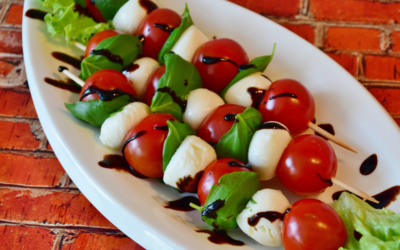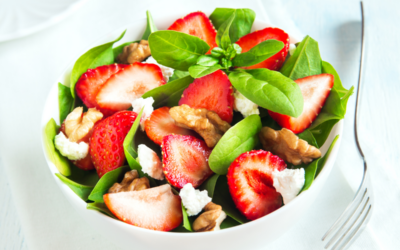Summary of key points:
Cleaning and preparing Chicken of the Woods mushrooms involves a few essential steps to ensure they are safe and delicious. Here’s an outline of the process:
1. Harvesting: When gathering Chicken of the Woods mushrooms, ensure you are confident in your identification skills. These mushrooms have a bright orange or yellow color with a shelf-like appearance. Ensure the mushroom you’re picking is in good condition, fresh, and free from decay or insect damage.
2. Cleaning: Start by gently brushing off any dirt or debris from the surface of the mushrooms using a soft brush or cloth. Avoid washing them with water as they tend to absorb moisture quickly, which can affect their texture.
3. Trimming: Use a sharp knife to trim away any tough or woody parts of the mushroom. Pay attention to the edges and base, as these areas can be particularly fibrous. Cut the mushroom into manageable-sized pieces for cooking.
4. Optional soaking: Some people prefer to soak Chicken of the Woods mushrooms in cold water for about 30 minutes to remove any potential bitterness. This step is optional but can help improve the flavor.
5. Cooking: Chicken of the Woods mushrooms have a meaty and firm texture, making them suitable for various cooking methods. They can be sautéed, grilled, stir-fried, or used in soups and stews. Follow your desired recipe to cook them to perfection.
Remember, it’s always a good idea to start with a small portion when trying a wild mushroom for the first time to ensure you don’t have any adverse reactions. Additionally, if you need clarification on the identification or safety of a wild mushroom, consult an expert or mycologist before consuming it.
Chicken of the Woods stands out as a unique and sought-after species when working with wild mushrooms. Its vibrant colors, distinct texture, and rich flavor make it a delightful addition to various culinary creations.
However, before diving into the realm of Chicken of the Woods recipes, it’s crucial to understand how to clean and prepare these mushrooms properly. Cleaning ensures the removal of any dirt, insects, or other impurities, while preparation involves trimming and incorporating them into dishes that showcase their natural attributes.
This guide will delve into cleaning and preparing Chicken of the Woods mushrooms, equipping you with the knowledge and skills to harness your full culinary potential. So, let’s embark on this culinary adventure and learn how to clean and prepare Chicken of the Woods mushrooms for a truly delectable dining experience.
Harvesting
To harvest Chicken of the Woods mushrooms, follow these guidelines:
- Identification: Ensure you can confidently identify Chicken of the Woods mushrooms (Laetiporus species) before harvesting. They typically have a vibrant orange or yellow color with a shelf-like or bracket-like growth pattern. Consult reliable field guides or seek assistance from experienced foragers if you need more clarification on identification.
- Choose healthy specimens: Look for fresh and young Chicken of the Woods mushrooms free of signs of decay, insect infestation, or damage. They should have a firm texture and a vibrant color. Avoid mushrooms that appear slimy, discolored, or smell foul.
- Harvesting technique: Use a sharp knife to carefully cut the mushrooms at the base where they attach to the tree or log. Make a clean cut to ensure the remaining mushrooms have the highest chance of regenerating. Avoid pulling or ripping the mushrooms off the substrate, damaging the mycelium and hindering future growth.
- Sustainable harvesting: It’s essential to practice sustainable foraging to ensure mushroom health and longevity. Avoid over-harvesting in a single area or taking all the visible mushrooms. Leave some behind to allow the mycelium to propagate and continue growing.
- Permission and regulations: If you are foraging on private property or in a protected area, obtain the landowner’s permission or check local wild mushroom collection laws. Some sites may have restrictions or permits foraging.
Always prioritize safety and responsible foraging practices when harvesting wild mushrooms. Consult experts or join local mycological societies for guidance when in doubt.
Cleaning
To clean Chicken of the Woods mushrooms, follow these steps:
- Brushing off dirt: Gently brush the mushroom’s surface with a soft brush or cloth to remove any dirt, debris, or loose particles. This step eliminates the surface contaminants without exposing mushrooms to excess moisture.
- Trimming: Examine the mushrooms and trim away any tough or woody parts. Focus on the edges and base, as these areas can be more fibrous and less desirable for consumption. Use a sharp knife to clean cuts and remove damaged or discolored sections.
- Inspecting for bugs: Check mushroom surfaces and crevices for insects or larvae. If you find any, carefully remove them with a knife or brush. Wild mushrooms harbor small animals, but it’s wise to eliminate them before cooking.
- Soak (optional): Some prefer to leave Chicken of the Woods mushrooms in cold water for 30 minutes to reduce bitterness. If you choose to do so, submerge the mushrooms in a bowl of clean water, ensuring they are fully immersed. After soaking, gently lift the mushrooms from the water to avoid stirring up any settled debris.
- Drying: After cleaning and, if necessary, soaking, place the mushrooms on a clean towel or paper towel to air dry. Allow them to sit for a few minutes to remove excess moisture. Pat them gently with a towel if needed, being careful not to crush or damage mushrooms.
Chicken of the Woods mushrooms are highly absorbent, so avoid rinsing them with water. Excessive moisture can affect texture and flavor.
Trimming
Before you start dating yourself, there are some essential steps you can take to set yourself up for success.
- Assess the mushroom: Sift through the mushroom and identify any challenging, woody, or unappetizing parts. These areas are usually found at the mushroom’s edges and base.
- Use a sharp knife: Ensure you have a sharp knife to make clean cuts. Dull blades can crush mushroom tissue and make trimming harder.
- Remove challenging sections: Start by removing any tough or fibrous portions of the mushroom. These parts can be challenging to chew and may impact the dish’s texture. Make a few controlled cuts to eliminate the undesirable sections.
- Discard damaged or discolored parts: If you notice any damaged, decayed, or discolored sections, remove them with your knife. Eliminating these areas is essential to ensure mushroom safety and enjoyment.
- Cut into desired sizes: Once you’ve removed the challenging and damaged parts, cut the mushroom into manageable pieces for cooking. Consider the recipe you’ll use and determine the appropriate sizes accordingly.
Work carefully while trimming to preserve as many usable mushrooms as possible. Then, the cut portions can be composted or discarded, while the remaining cleaned and trimmed Chicken of the Woods mushrooms are ready for culinary preparations.
Optional soaks
Optional soaking can reduce bitterness in Chicken of the Woods mushrooms. Here’s how to proceed:
- Prepare a bowl of cold water: Fill a bowl with enough clean, cold water to submerge the Chicken of the Woods mushrooms fully.
- Submerge the mushrooms: Place the cleaned and trimmed mushrooms into the water bowl, ensuring they are fully immersed. Press them down gently if needed but avoid stirring or agitating the mushrooms vigorously.
- Soak for 30 minutes: Allow the mushrooms to sit in the water for 30 minutes. This soaking period helps leach out any bitter compounds in the mushrooms.
- Lift the mushrooms carefully: After the soaking time has elapsed, gently lift the mushrooms out of the water. Be cautious not to disturb any settled debris at the bottom of the bowl.
- Pat dry or air dry: Cool the soaked mushrooms on a clean or paper towel. You can gently pat them with a towel to remove excess moisture. Alternatively, you can allow them to air out for a few minutes, ensuring they are not exposed to excessive moisture.
- Proceed with cooking: Once the mushrooms are dry, they can be used in your recipe. The soaking process should reduce bitterness, resulting in more enjoyable flavors.
The soaking step is optional and may vary depending on personal preference and the specific characteristics of the mushrooms. For example, some Chicken of the Woods mushrooms are naturally mild and don’t require soaking. Feel free to experiment and adjust based on your taste preferences.
Cooking
You have various options to explore when cooking Chicken of the Woods mushrooms. Here are some cooking methods to consider.
- Sautéing: Sautéing Chicken of the Woods mushrooms is a popular method that brings out their natural flavors. Heat a frying pan over medium heat, add butter or oil, and sauté the mushrooms until they become tender and golden brown—season with salt, pepper, and herbs of your choice.
- Grilling: Chicken of the Woods mushrooms are delicious grilled. Preheat your grill to medium-high heat and brush the mushrooms with oil or a marinade. Grill them for a few minutes on each side until they develop grill marks and are cooked through. You can cut them into smaller pieces or skewer them for easier grilling.
- Stir-frying: Incorporating Chicken of the Woods mushrooms into stir-fries adds a unique texture and flavor. Heat a wok or a large skillet over high heat, add some oil, and stir-fry the mushrooms with your desired vegetables and seasonings. Cook until the mushrooms are tender and well-coated with the dish’s flavors.
- Roasting: Roasting Chicken of the Woods mushrooms can intensify their flavors. Preheat your oven to a moderate temperature (around 375°F or 190°C). Toss the mushrooms with oil, salt, pepper, and desired herbs or spices. Spread them on a baking sheet and roast for 15-20 minutes or until browned and tender.
- Soup or stew: Chicken of the Woods mushrooms can be added to soups or stews to enhance their taste and texture. Slice or chop the mushrooms into bite-sized pieces and incorporate them into your favorite soup or stew recipe. Simmer until the mushrooms are cooked and the flavors are melded together.
- Other methods: You can also experiment with cooking techniques such as baking, braising, or even using Chicken of the Woods mushrooms as a meat substitute in vegetarian or vegan dishes. The firm texture of these mushrooms makes them versatile in the kitchen.
Adjust the cooking time based on the mushrooms’ size and thickness. Always cook Chicken of the Woods mushrooms thoroughly to ensure their safety. Then, let’s start exploring different recipes and flavors with these unique mushrooms!
Takeaway
Cleaning and preparing Chicken of the Woods mushrooms is essential to ensure their safety and deliciousness in culinary creations. Following the steps outlined, you can confidently identify, clean, and prepare these wild mushrooms for mouthwatering dishes. Remember to exercise caution when foraging wild mushrooms and consult with an expert or reliable resources to ensure proper identification.
Cleaning the mushrooms thoroughly removes dirt, debris, or insects, providing a new final product. Properly preparing the Chicken of the Woods mushrooms by removing tough or woody parts and incorporating them into recipes that complement their unique flavor and texture allows you to enjoy their culinary potential fully. So, embrace the adventure of working with Chicken of the Woods mushrooms, and let your creativity and culinary skills shine as you explore the delectable world of these fascinating fungi.















